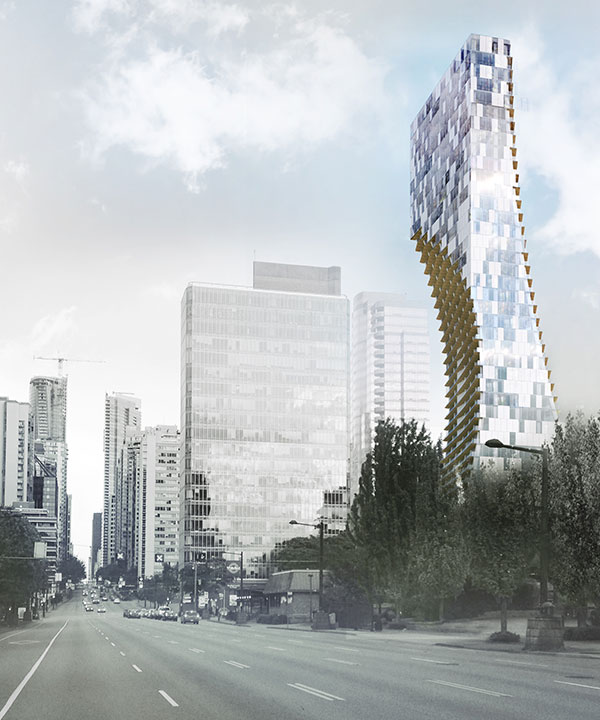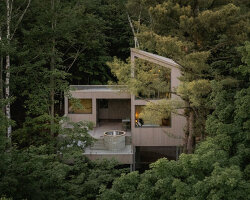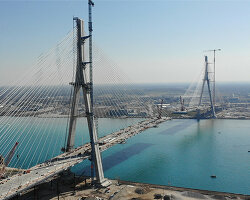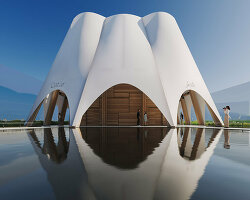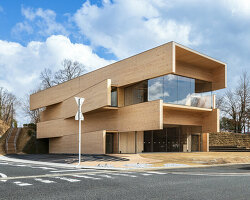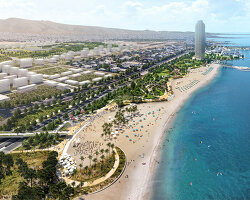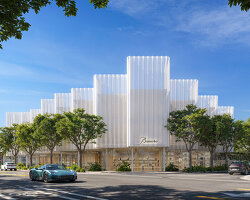designboom recently spoke with famed japanese architect kengo kuma about his first residential tower project in north america located in a transitioning urban context in downtown vancouver. ‘alberni’ is a project commissioned by the canadian firm westbank corporation, an avant garde developer whose scope of work transcends that of the traditional developer through its holistic integration of the senses, merging the worlds of construction, urban design, art, culture, and philanthropy that results in structures that are meant to fit within the greater context of the community in all aspects.
given kuma’s sensibilities with light and material as well as his acute sense of designing with nature, he was an obvious choice to design the new 43-story building in a city so closely tied with the surrounding landscape and asian heritage. alberni is primarily a residential tower with commercial spaces on the ground floor. the unique form features concave voids that carve away at an otherwise rectangular volume, with an exposed structure that emphasizes the sinuous facade complemented by a tessellated three-dimensional wooden trellis.
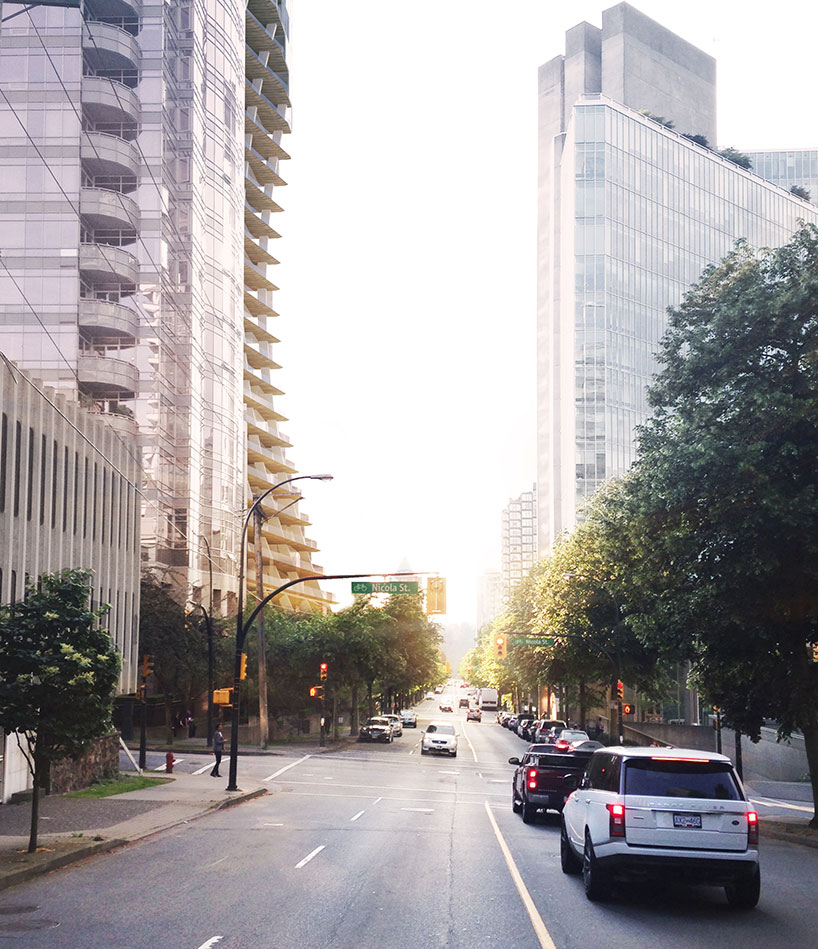
image © kengo kuma and associates / all images courtesy of killeencommunication
in keeping with westbank’s cultural principles, the project employs a new strategy to integrate into the urban fabric, a large part of the ground floor is public space taking the form of a japanese moss garden, the first of its kind in the city. a sculpted topography forms a natural amphitheater with walkways that cut across the site that depart from the traditional grid and offer the community a new experience when moving around the city. the moss garden offers ground-level green space capable of hosting events or simply offering a momentary pause from the concrete and glass, whose centerpiece is a westbank signature: a custom made, kuma-designed fazioli piano that adds the element of music to the astounding architectural enclosure.
vancouver is a beautiful place. the wild nature is very close to the city and also the beautiful ocean is very close to the center of the city. in tokyo we have an ocean but the ocean is not as beautiful and we don’t feel that it is close. here the water is just there, it’s very clean water and that’s important for a city. – kengo kuma
designboom was invited to the official presentation of the westbank project in vancouver where we spoke with kengo kuma about the residential development, and what he wanted to achieve in his first project in canada.
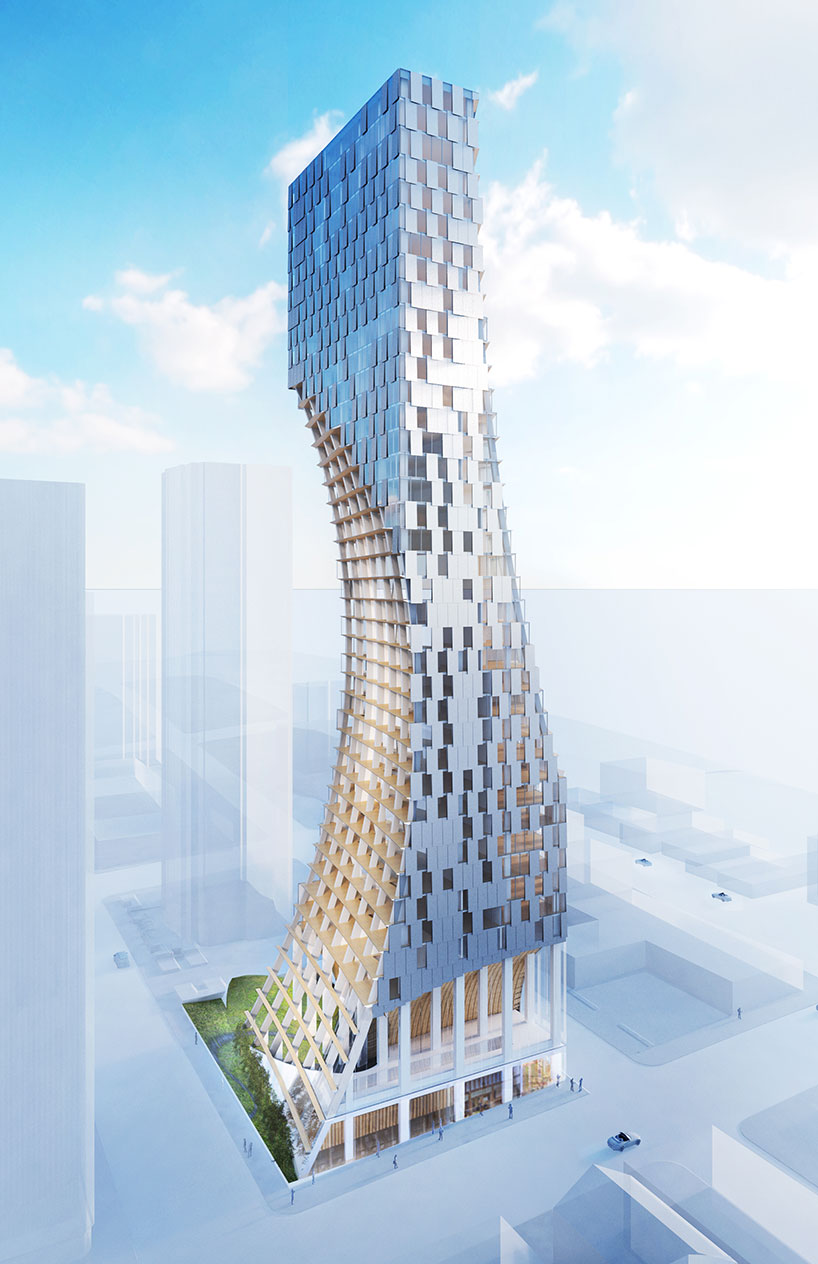
image © kengo kuma and associates
designboom: vancouver is a city closely tied to its varied natural surroundings, how has this influenced the approach in designing alberni?
kengo kuma: at a certain point this is not an independent tower. with the tower we can create the connection with this beautiful environment and we carefully designed the relationship between the unit and the view. the shape of the tower is irregular – from every unit we designed the view to the ocean, to the mountains, and eventually we achieved this unique shape. this unique shape and section is not arbitrary it is a natural solution.
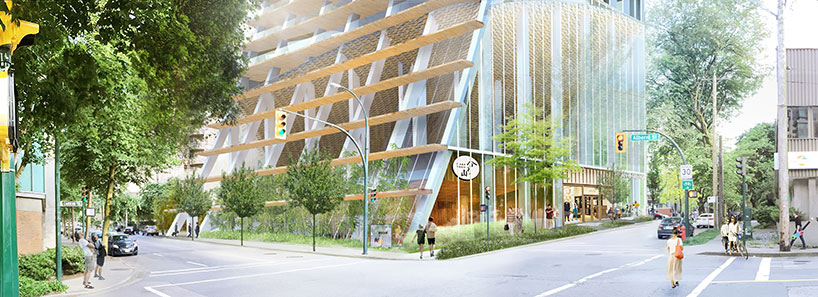
street level
image © kengo kuma and associates
DB: how does the program fit within the greater context of a transitioning and developing urban community?
KK: there is commercial [space] on the ground floor but more importantly is the moss garden, it’s the most important part. [the moss garden] is a kind of in-between space with the street and we think it should be part of the street life because the street life in vancouver is very lively, very human. we want to give a special gift to that kind of city life. in the moss garden anything can happen, concerts, small parties, and gardens are also beautiful. a wooden lattice as a special structural system will be in this construction and people can get a sense of craftsmanship even in this kind of high rise building. the site is on a very important street- after this building we believe people will love the street more.
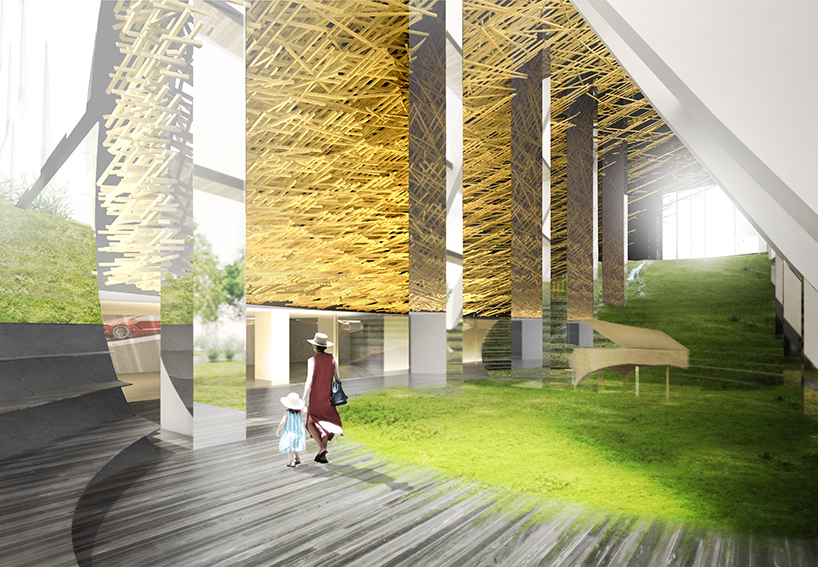
ground level of the moss garden with variations on the wood trellis
image © kengo kuma and associates
DB: your projects are known for their particular attention to detail, which at a smaller scale is possible to achieve – when working at this scale do you find you are not able to detail to the same degree you would on a smaller project?
KK: even for this kind of big project we can bring craftsmanship to the building. normally the architects just design the skin but we designed every detail. there is the moss garden, there are special balconies, we tried to achieve the special details. from the residences and even the people walking on the street can get a sense of the preciseness of detail. in the 20th century wood disappeared from the city, but before the 20th century we were living with wood, the warmth of wood, the softness of wood. so I would like to go back to that kind of lifestyle. now with contemporary technology we can make it happen. the wood changes the atmosphere of the building totally different from the typical towers. some of it is inside some is outside.
a unique aspect to the design is the use of wood, which exposes itself especially in the carved out sections of the structure. in the ‘city of green glass’ the wood in its various forms brings a touch of warmth to the public realm, especially when paired with the lush green of the moss garden. the underside of the balconies are also made up of exposed timber members which become nothing more than a shadow on clear days but when the light levels change during cloudy days the color and texture of the wood is easily visible from the street changing the feel of the structure. the unit interiors also feature more organic timber elements that offer a more human feel. the material is not only historically a staple industry in the area but also represents the merging of two cultures, as wood has been used as a primary building material in japan for centuries.
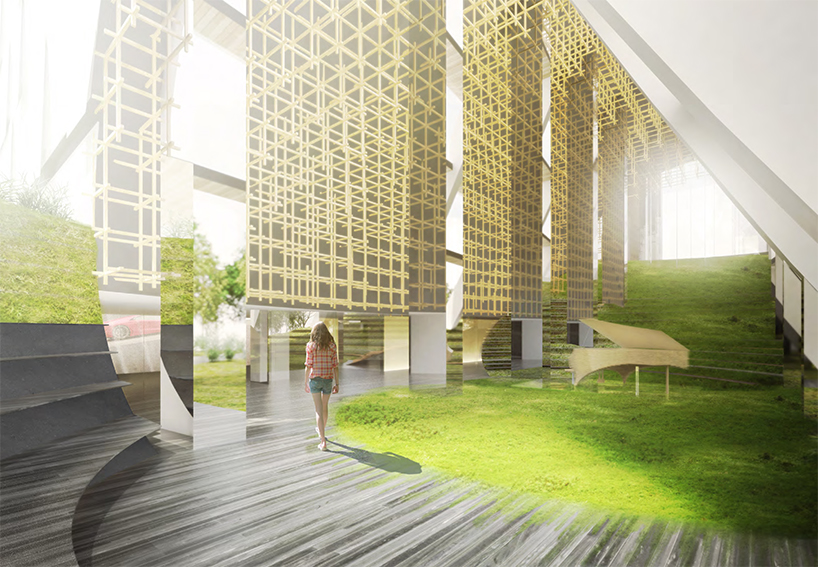
kkaa-designed custom fazioli piano takes center stage
image © kengo kuma and associates
DB: to what degree have you integrated materials or design ideas from japan and to what extent do you believe this is necessary or appropriate in today’s globalized world?
KK: some of [the materials] are from asia, from japan. these materials are a sort of cultural exchange- the city itself is a cultural exchange, so the details and the materials are the result of this cultural exchange. using materials from other cultures can stimulate a city.
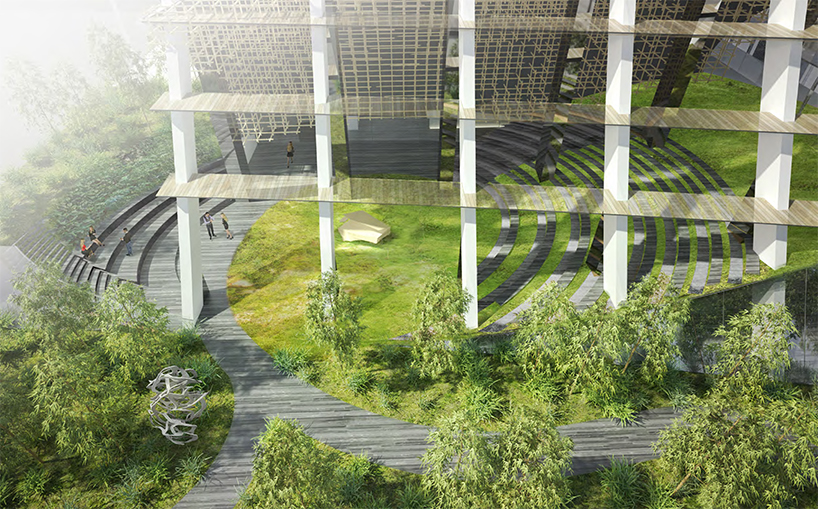
aerial view of the moss garden integrating circulation, structure and vegetation in an urban context
image © kengo kuma and associates
DB: how was the experience working with the developer, westbank, who is known for their unique cultural approach to each project?
KK: westbank is very unique. they designated this a cultural project, it’s a cultural exchange between east and west. we are talking about japanese gardens and japanese food. this kind of approach was very shocking to us. we realized that this kind of cultural debate is still possible in a contemporary city. yes we have gotten more freedom with them but more importantly it’s the conversation with westbank that is very interesting.
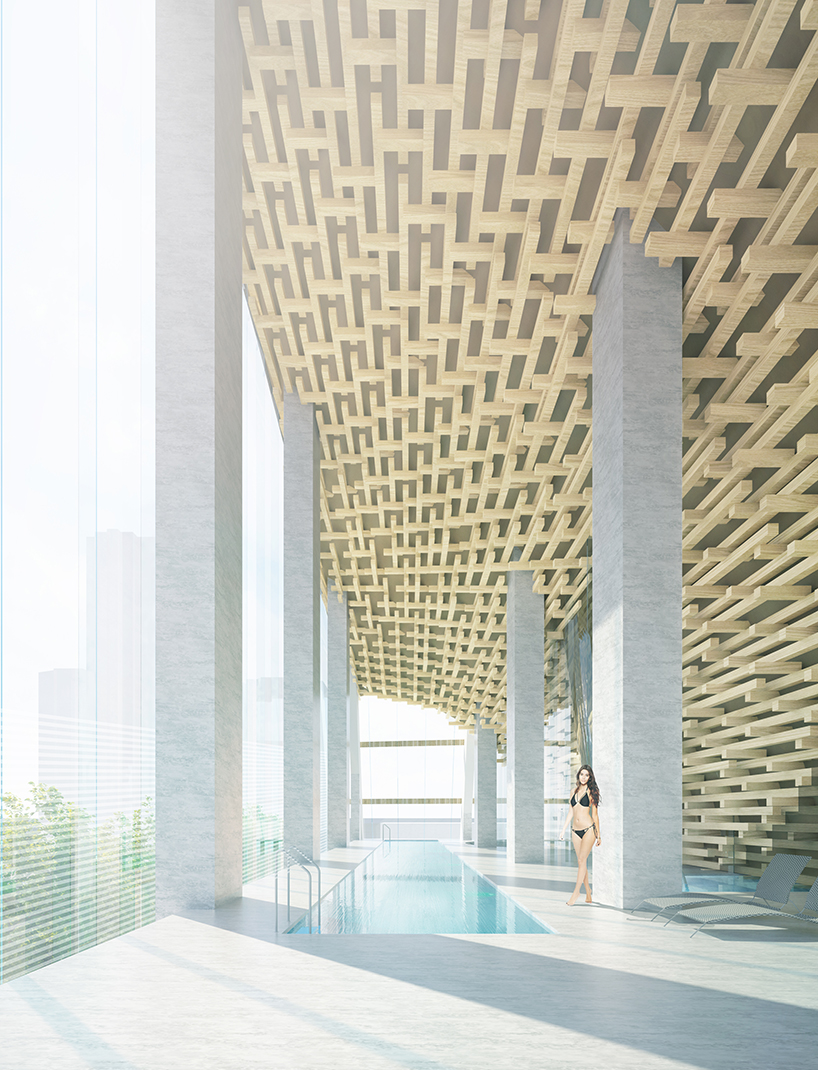
swimming pool deck marked by tessellated wooden trellis
image © kengo kuma and associates
DB: what have been some of the more challenging aspects of designing at this scale?
KK: it’s a very unique shape that came from a conversation with the neighbors and a conversation with the environment. some architects believe the shape of the skyscraper is a representation of their own ego but our shape is coming from the relationship with nature, which was a challenge to translate into form.
the regular internal grid of the building is in reality a small area that is able to continue from ground level to the rooftop. the design’s footprint at the ground level occupies a completely different space than it does at the top, leading to the use of curved concrete columns that are capable of transferring the forces of the irregular shape from all directions, including the more unpredictable wind and seismic loads.
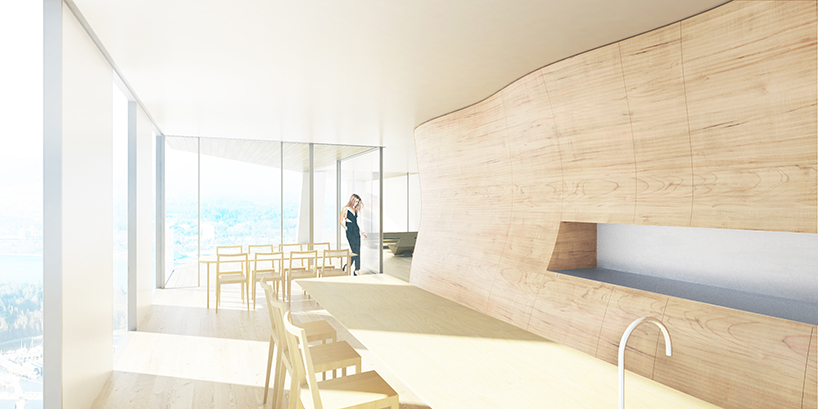
interior of a typical unit – wood softens the internal material palette
image © kengo kuma and associates
DB: you mentioned that it’s important to learn from every project, what have you learned after designing alberni?
KK: with alberni I learned how to fit a skyscraper into a beautiful city. this skyscraper is a response to the beautiful city. it is a big city but at the same time it is a part of nature and I love that kind of unique combination, a combination of functional design and beautiful design.
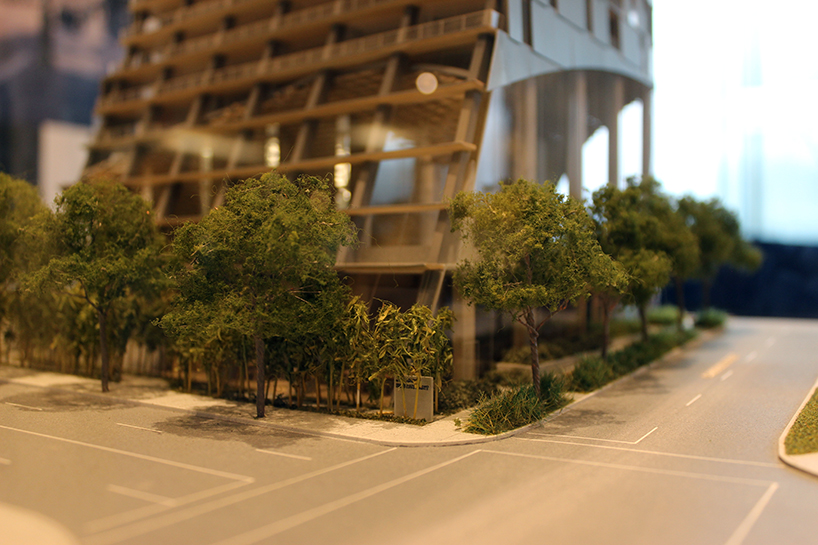
view from the street
image © designboom
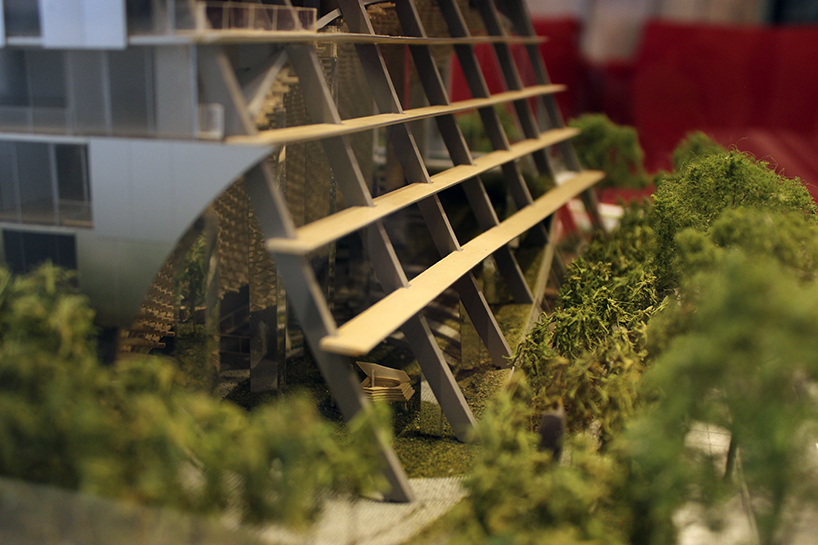
alberni model – view into the ground level moss garden
image © designboom
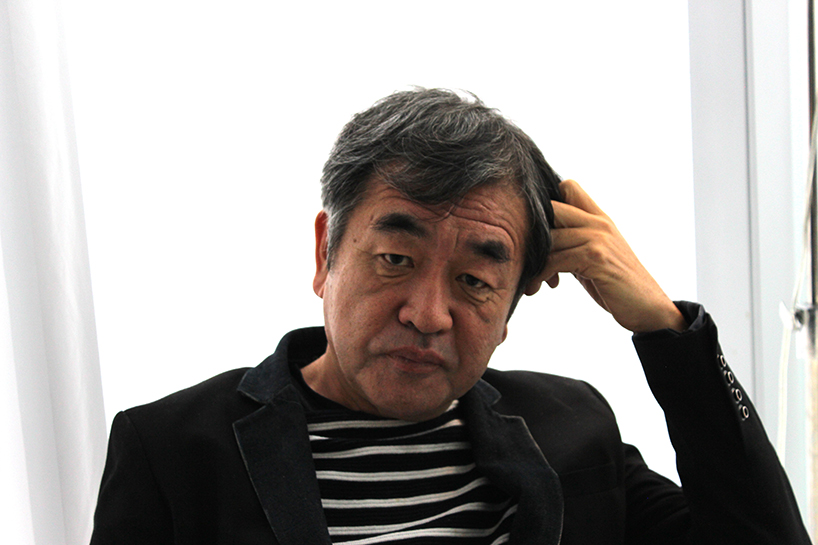
architect kengo kuma
image © designboom







Save
architecture in canada (252)
architecture interviews (267)
kengo kuma (266)
PRODUCT LIBRARY
a diverse digital database that acts as a valuable guide in gaining insight and information about a product directly from the manufacturer, and serves as a rich reference point in developing a project or scheme.
